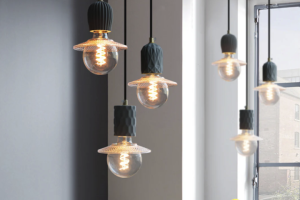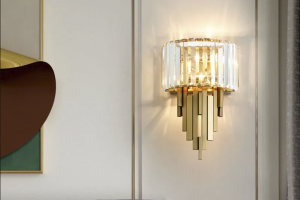Introduction
Ceiling lights are an integral part of any home’s interior decor. With the rise in popularity of smart homes and LED lighting options, the installation of ceiling lights has become a complex task. One of the most confusing aspects of installing ceiling lights for most homeowners is handling multiple wires. This guide is designed to help you understand the nature of ceiling light wiring, how to handle multiple wires, and tips to ensure that the lighting system is safe and functional.
Ceiling Light Wiring Basics
Wiring a ceiling light may seem like a daunting task, but it’s a job that almost anyone can do with minimal training. Before you start, you should understand the basics of wiring. Ceiling lights are powered by a live (black) and neutral (white) wire that connects to the lighting fixture via a junction box. The ground (bare copper) wire connects to the fixture and helps to ground any excess electricity.
Multiple Wires: What are They and How to Identify Them
Multiple wires in a ceiling light fixture may cause confusion, but they aren’t unusual. These wires may include extra live and neutral wires, grounding wires, and a wire for controlling the light switch. It’s essential to identify what type of wire you’re dealing with before you begin the light installation process.
The black/white wires are likely to be the live/neutral wires powering the light fixture. The bare or green wire is usually a grounding wire. Additionally, there may be a wire that connects to the light switch, allowing you to turn the light on/off from the switch. If you’re experiencing difficulty identifying the different types of wires, consult a licensed electrician before continuing.
How to Handle Multiple Wires
Handling multiple wires requires patience and precision, but it’s not impossible. The first step is to make sure that you’ve switched off the power to the ceiling light fixture. Use a non-contact voltage tester to double-check that there is no electrical current flowing through any wires.
Next, use the wire stripper to remove about half an inch of the wire insulation on each wire, being careful not to cut any of the wires. You should then twist the exposed ends of the wires to create a tight connection. Finally, connect the wire connector to ensure that the wires are secured in place before reinstalling the light fixture.
Tips for Safe Ceiling Light Installation
Ceiling light installation can be a fun and rewarding experience if done correctly. However, it’s important to keep safety in mind. Here are some tips to ensure that your installation process is safe and efficient:
– Switch off the power: Always switch off the power at the breaker box before attempting any wiring work.
– Use the right tools: Using the appropriate tools for the job is essential in avoiding any electrical hazards.
– Follow instructions: Always follow the direct installation instructions provided by the manufacturer.
– Test your wiring: After wiring the lighting fixture, use a non-contact voltage tester to make sure that there is no electrical current flowing through the wires.
– Consult a licensed electrician: If you’re experiencing difficulty in any part of the installation process, consider consulting a licensed electrician.





More Posts
Creative Studio Essential: Industrial Gear Pendant
Vintage Industrial Bulb Chandelier for Loft Spaces
Enhance Your Space with a Luxe Crystal Wall Lamp